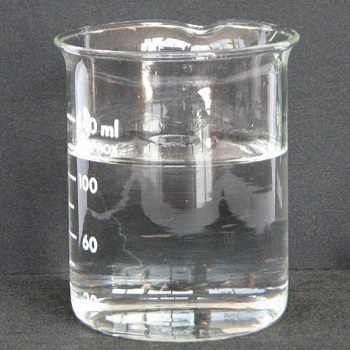-
外観
無色澄明の液体
-
定義
本品は、次の化学式で表される炭化水素である。
-
性質
イソペンタンは、分子量72.15g/mol、CAS番号78-78-4で表わされる無色でわずかに芳香がある無色液体です。pHは中性、融点−159.9°C、引火点<−51℃、沸点27.9℃、自然発火温度420℃の引火性液体です。
蒸気圧は917hPa (25℃) 、密度は0.617〜0.622g/cm³ (20℃) 、動粘性率は0.345mm²/s (20℃) 、水への溶解度 48mg/L (25℃) 、有機溶媒はジエチルエーテルに溶解します。
通常の状態において安定ですが、日光、熱を避ける必要がります。また、酸化剤と接触すると反応し、危険有害な分解生成物として一酸化炭素を発生させる可能性があるため注意が必要です。
-
溶解性
エタノール及びアセトンに極めて溶けやすく、水にほとんど溶けない。
-
解説
イソペンタン,ペンタンの異性体の一種。ほとんど無色で特有な臭いを発する揮発性の液体。液体窒素やプロパンと混ぜて、寒剤として利用される。
-
用途
有機合成原料、低沸点溶剤。
-
用途
有機合成原料(イソプレンを経て合成ゴム)、機器分析の標準。
-
化粧品の成分用途
減粘剤、噴射剤、起泡剤、溶剤
-
化学的特性
2-Methylbutane (isopentane), C5H12, is a flammable liquid and exhibits physical properties very similar to those of pentane. It has been detected in urban air.

2-Methylbutane is an alkane that is butane substituted by a methyl group at position 2. It has a higher BP than butane because, although similarly branched, it has a higher MW. A useful analogy for comparing molecules with the same size of longest chain is that of cylindrical-shaped molecules. It has a role as a refrigerant. Biological samples flash frozen for example with a combination of liquid nitrogen and methylbutane can then be used for storage, cryosection, etc.
-
物理的性質
Clear, colorless, watery, very flammable liquid with a pleasant odor. Evaporates quickly when
spilled. An odor threshold concentration of 1.3 ppmv was reported by Nagata and Takeuchi
(1990).
-
使用
Isopentane is an organic, branched-chain alkane with five carbon atoms. 2-Methylbutane undergoes catalytic dehydrogenation in the presence of chromia-alumina catalyst to form isoamylenes, which can undergo further dehydrogenation to form isoprene. It may also be used as a solvent in the preparation of trans-Bis(triethylphosphine) (hydroxy carbonyl) (phenyl) platinum(II), a metallacarboxylic acid.
-
調製方法
Isopentane is produced by fractional distillation of natural
gas liquids and crude oil.
-
製造方法
2-Methylbutane was synthesized by liquid-phase catalytic isomerization at 95°C using pentane as raw material.
-
定義
ChEBI: 2-methylbutane is an alkane that is butane substituted by a methyl group at position 2. It has a role as a refrigerant.
-
安全性
GHSにおいて、物理的危険性で引火性液体 (区分1) 、環境有害性で水生環境有害性・短期・急性 (区分2) に分類されます。また、健康有害性で眼に対する重篤な損傷性/眼刺激性 (区分2A) 、特定標的臓器毒性・単回ばく露 (区分3・麻酔作用) 、特定標的臓器毒性・単回ばく露 (区分3・気道刺激性) 、誤えん有害性 (区分1) に分類されます。
極めて引火性の高い液体および蒸気を発生させ、気道に侵入すると生命に危険のおそれがあるため、使用時は人体に曝露しないよう注意が必要です。
-
一般的な説明
Watery colorless liquid with a gasoline-like odor. Floats on water. Flammable, irritating vapor is produced. Boiling point is 82°F.
-
空気と水の反応
Highly flammable. Insoluble in water.
-
反応プロフィール
2-Methylbutane is a fire and explosion hazard when in contact with oxidizing agents. .
-
健康ハザード
Inhalation causes irritation of respiratory tract, cough, mild depression, irregular heartbeat. Aspiration causes severe lung irritation, coughing, pulmonary edema; excitement followed by depression. Ingestion causes nausea, vomiting, swelling of abdomen, headache, depression.
-
火災危険
Behavior in Fire: Highly volatile liquid. Vapors may explode when mixed with air.
-
使用用途
イソペンタンは、沸点が常温から体温のあたりであることから、遅効性の発泡剤として使用されています。具体例として、シェービングフォームや発泡式冷却スプレーなどが挙げられます。
噴霧時間が長くなると、引火事故が起こる可能性があるため利用する際は注意が必要です。また、寒冷地用ガソリンに添加し、ガソリンエンジンの始動を容易にするのに使用されます。実験室において、イソペンタンは、液体窒素やプロパンと混ぜて寒剤に使われています。
-
応急処置
皮膚に付着した場合は、直ちに汚染された衣類を全て脱ぎ、皮膚を大量の水で洗います。吸入した場合は、空気の新鮮な場所に移し、呼吸しやすい姿勢で休息させます。
眼に入った場合は、水で15分以上注意深く洗い、コンタクトレンズを着用していて容易に外せる場合は外し、洗浄を続けます。いずれも症状が続く場合は、医師の診断、手当が必要です。
飲み込んだ場合は、吐き出させるとかえって肺の吸引などの危険性が増す為、無理に吐かせず、直ちに医師に連絡します。診断時はSDS等を提出し、情報提供を行います。
-
火災時の措置
イソペンタンによる火災時は、水による消火活動をしてはいけません。粉末・二酸化炭素、乾燥砂、泡を使用して消火を行います。
消火作業は、風上から行い、消火活動を行う人は必ず呼吸保護具を着用します。初期の火災時は、粉末・二酸化炭素、乾燥砂などを用い、大規模火災の際には、泡消火器などを用いて空気を遮断することが有効です。
-
取扱方法
作業場所は、密閉された装置、機械、または局所排気装置を使用し、取扱いは換気のよい場所で行います。また、静電気対策のために、装置、機器等の接地を確実に行います。
作業者は、防毒マスク (有機ガス用) または送気マスクの着用および、耐溶剤手袋、耐溶剤手袋、保護衣 (長袖作業衣) 、保護長靴、保護服等の着用が必要です。イソペンタンと酸化剤が接触しないよう注意し、使用しない場合は、ガラス、ふっ素樹脂、ステンレス製の容器で密栓して冷暗所に保管します。
参考文献
-
安全性プロファイル
Mddly toxic and
narcotic by inhalation. See also PENTANE.
Flammable liquid. A very dangerous fire and
explosion hazard when exposed to heat,
flame, or oxidzers. Keep away from sparks,
heat, or open flame; can react with oxidizing
materials. To fight fire, use foam, CO2, dry
chemical. When heated to decomposition it
emits acrid smoke and irritating fumes.
-
環境運命予測
Photolytic. When synthetic air containing gaseous nitrous acid and 2-methylbutane was exposed
to artificial sunlight (λ = 300–450 nm), acetone, acetaldehyde, methyl nitrate, peroxy-acetal
nitrate, propyl nitrate, and pentyl nitrate were formed (Cox et al., 1980).
Based upon a photooxidation rate constant of 3.90 x 10-12 cm3/molecule?sec with OH radicals in
summer daylight, the atmospheric lifetime is 36 h (Altshuller, 1991). At atmospheric pressure and
300 K, Darnall et al. (1978) reported a rate constant of 3.78 x 10-12 cm3/molecule?sec for the same
reaction.
Cox et al. (1980) reported a rate constant of 5.0 x 10-11 cm3/molecule?sec for the reaction of
gaseous 2-methylbutane with OH radicals based on a value of 8 x 10-12 cm3/molecule?sec for the
reaction of ethylene with OH radicals.
Chemical/Physical. Complete combustion in air produces carbon dioxide and water vapor.
2-Methylbutane will not hydrolyze because it does not contain a hydrolyzable functional group.
-
純化方法
Stir isopentane for several hours in the cold with conc H2SO4 (to remove olefinic impurities), then wash it with H2O, aqueous Na2CO3 and H2O again. Dry it with MgSO4 and fractionally distil it using a Todd column packed with glass helices. Material transparent down to 180nm is obtained by distilling from sodium wire, and passing through a column of silica gel which had previously been dried in place at 350o for 12hours before use. [Potts J Phys Chem 20 809 1952, Beilstein 1 IV 320.]





